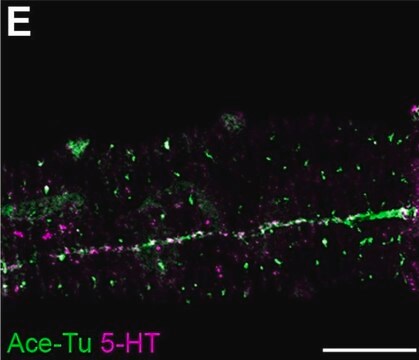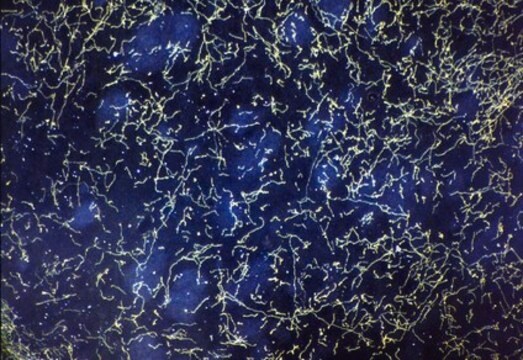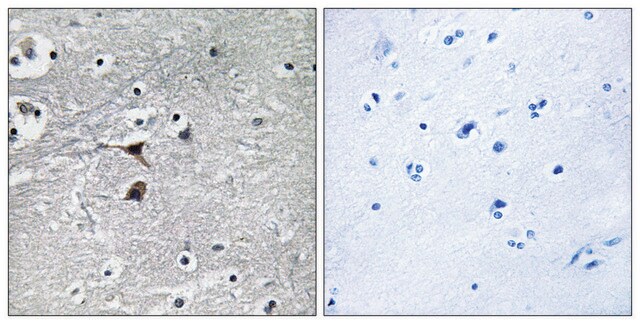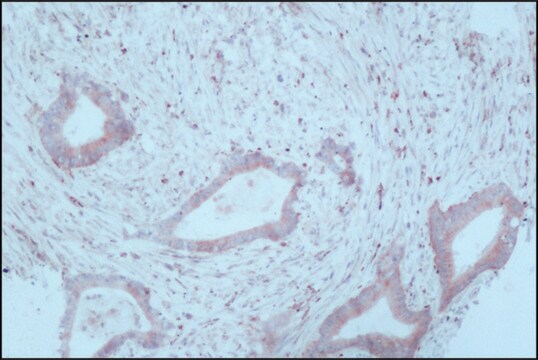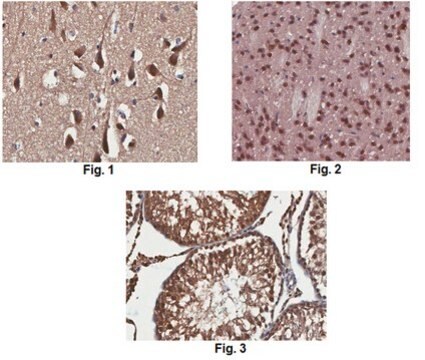AB125
Anti-Serotonin Antibody
serum, Chemicon®
Synonyme(s) :
5-HT
About This Item
Produits recommandés
Source biologique
rabbit
Niveau de qualité
Forme d'anticorps
serum
Type de produit anticorps
primary antibodies
Clone
polyclonal
Espèces réactives
rat
Fabricant/nom de marque
Chemicon®
Technique(s)
immunohistochemistry: suitable
Conditions d'expédition
dry ice
Modification post-traductionnelle de la cible
unmodified
Spécificité
The cross-reactivities were determined using an ELISA test by competition experiments with the following compounds:
Compound Cross-reactivity
5-Hydroxytryptamine-G-PL 1
5-Methoxytryptamine-G-PL 1/25
Tryptamine-G-PL 1/60
5-Hydroxytryptophan-G-PL 1/175
5-Hydroxytryptamine 1/1150
Tryptophan-G-PL 1/3400
5-Methoxytryptophan-G-PL 1/19800
The antisera was also tested for specificity using the free-floating PAP technique on rat
raphe nuclei.
Abbreviations:
(G) Glutaraldehyde
(=) Non-reduced conjugate
(PL) Poly-lysine
Immunogène
Application
Optimal working dilutions must be determined by the end user.
Neuroscience
Neurotransmitters & Receptors
Forme physique
Stockage et stabilité
Informations légales
Clause de non-responsabilité
Vous ne trouvez pas le bon produit ?
Essayez notre Outil de sélection de produits.
Code de la classe de stockage
10 - Combustible liquids
Classe de danger pour l'eau (WGK)
WGK 2
Point d'éclair (°F)
Not applicable
Point d'éclair (°C)
Not applicable
Certificats d'analyse (COA)
Recherchez un Certificats d'analyse (COA) en saisissant le numéro de lot du produit. Les numéros de lot figurent sur l'étiquette du produit après les mots "Lot" ou "Batch".
Déjà en possession de ce produit ?
Retrouvez la documentation relative aux produits que vous avez récemment achetés dans la Bibliothèque de documents.
Notre équipe de scientifiques dispose d'une expérience dans tous les secteurs de la recherche, notamment en sciences de la vie, science des matériaux, synthèse chimique, chromatographie, analyse et dans de nombreux autres domaines..
Contacter notre Service technique